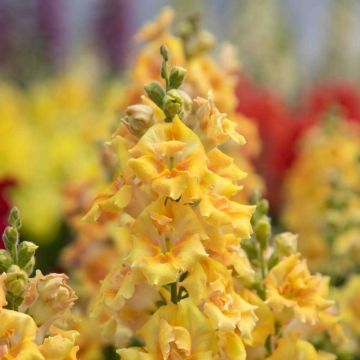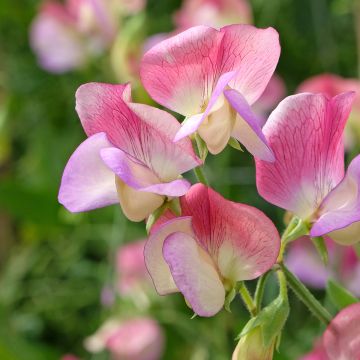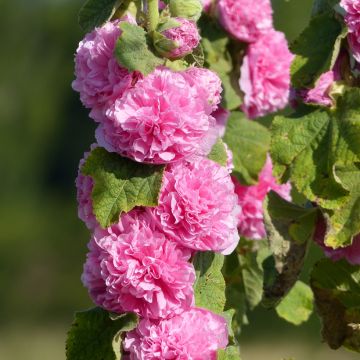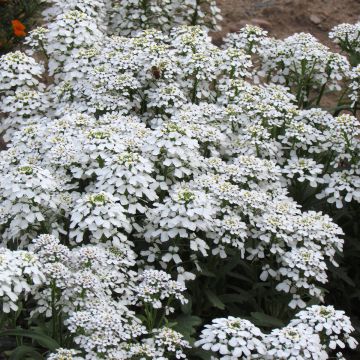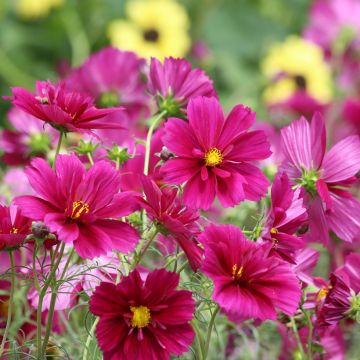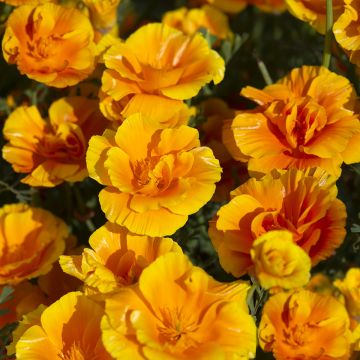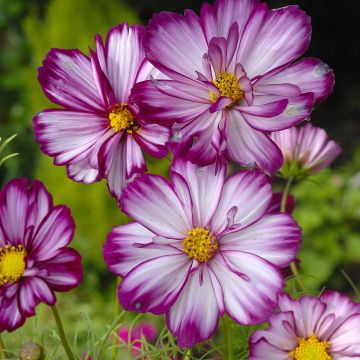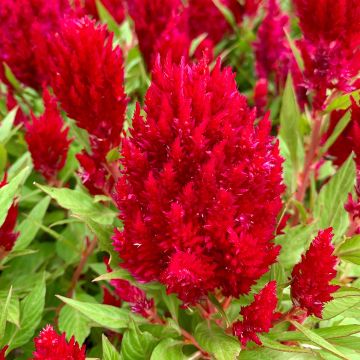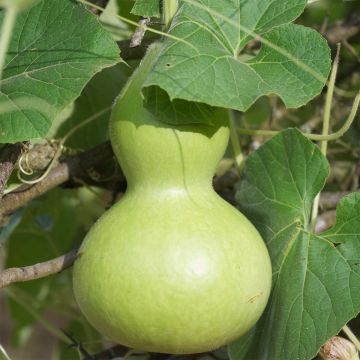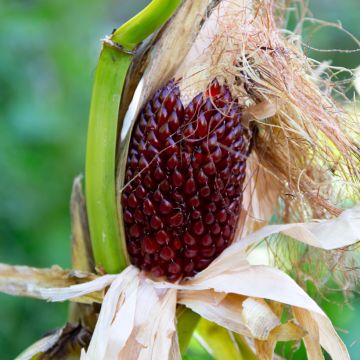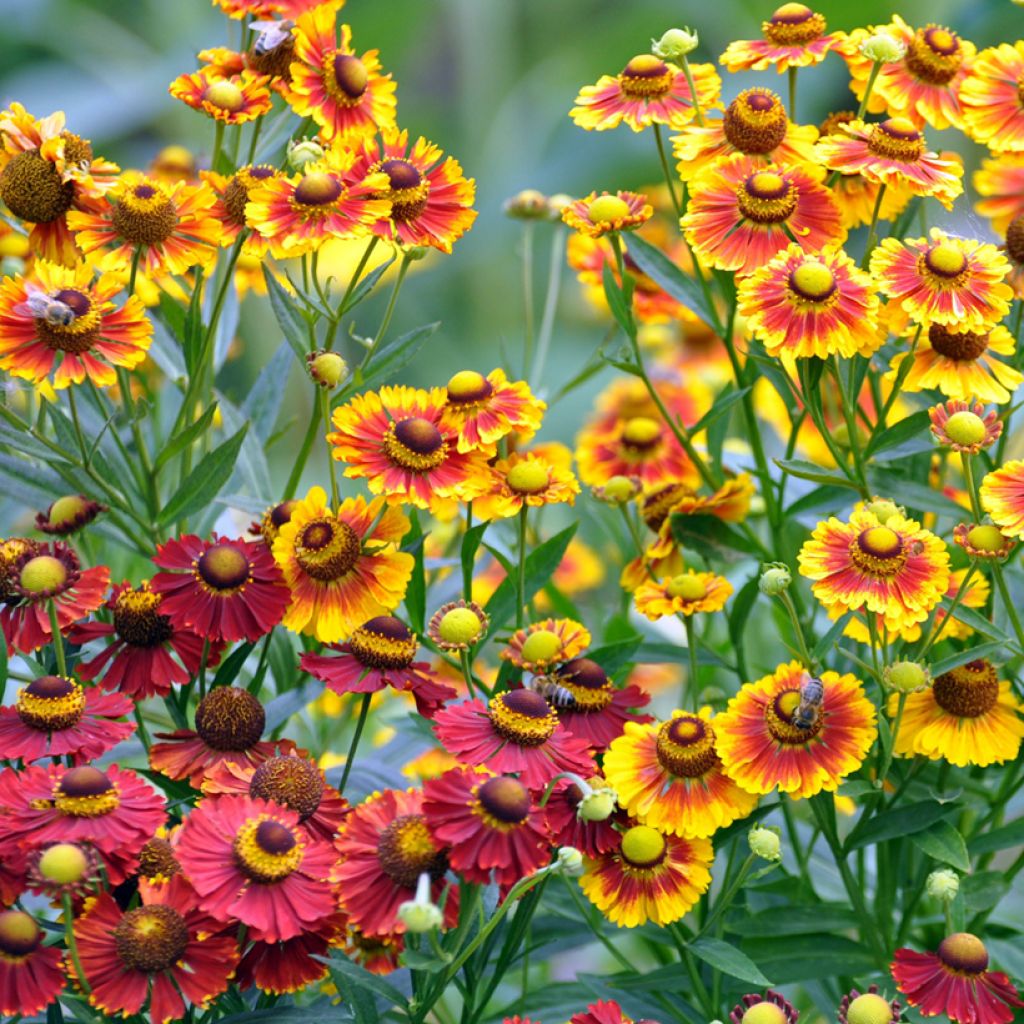

Helenium autumnale Red & Gold Hybrids seeds - Common sneezeweed
Helenium autumnale Red & Gold Hybrids seeds - Common sneezeweed
Helenium automnale Red & Gold Hybrids
Sneezeweed, Helen's flower, Dogtooth daisy
Special offer!
Receive a €20 voucher for any order over €90 (excluding delivery costs, credit notes, and plastic-free options)!
1- Add your favorite plants to your cart.
2- Once you have reached €90, confirm your order (you can even choose the delivery date!).
3- As soon as your order is shipped, you will receive an email containing your voucher code, valid for 3 months (90 days).
Your voucher is unique and can only be used once, for any order with a minimum value of €20, excluding delivery costs.
Can be combined with other current offers, non-divisible and non-refundable.
Home or relay delivery (depending on size and destination)
Schedule delivery date,
and select date in basket
This plant carries a 6 months recovery warranty
More information
We guarantee the quality of our plants for a full growing cycle, and will replace at our expense any plant that fails to recover under normal climatic and planting conditions.
Would this plant suit my garden?
Set up your Plantfit profile →
Description
Helenium autumnale 'red and gold hybrids' is a variety in a mix of very attractive autumnal shades: from yellow to orange and red to bronze. This generous, robust plant blooms from summer to autumn, in the sun, in any good garden soil. It brightens up flower beds and borders with its vibrant colours and is also a sensational cut flower. Sowing is easy and generally successful.
Native to North America where it grows on the forest edge in damp to moist areas, Helenium autumnale is a short-lived perennial (or sometimes an annual). It belongs to the large Asteraceae family, with inflorescences organised in flower heads.
'Red and Gold Hybrids' is a cultivar with a mix of colourful inflorescences. The plant forms a beautiful clump of branching stems reaching up to 1.20 m in height when in flower. Despite its size, this sneezeweed does not collapse under the weight of the flowers. The colourful, bright green, lanceolate leaves with smooth margins, are arranged alternately along the stems. Between July and October, a large number of flowers continuously bloom at the top of the stems in heads resembling large daisies of 7-8 cm in diameter. In the centre, the shiny, orange-brown cone gradually gives way to yellow stamens. At the periphery, the florets are red or reddish-brown, yellow to golden yellow, or orange, depending on the flower. This flowering, attracting numerous pollinating insects, heralds the beginning of autumn flowers and foliage.
Helenium 'red and gold hybrids' is a very hardy and disease-resistant selection. It appreciates moist to wet soils and sunny exposures. A low-maintenance plant, it may still need staking. Plants may also be pinched in June to reduce height. Easy to grow, it fits well in a cottage, country-style, or English garden. Despite all these qualities, sneezeweeds remain rare in gardens. Perhaps because their warm tones herald autumn a bit too soon, while the garden and gardener are still trying to hold onto the last summer blooms; yet they are the perfect complement to asters. 'Red and Gold Hybrids', combined with coneflowers, pairs very well with autumn plants like coral bells and sunflowers, but can also be combined with a dwarf winged spindle tree, whose foliage ignites at the first cold spells, or with the sumptuous dyer's madder. Consider cosmos, poppies, coneflowers and evening primroses as well. The grey foliage of Stachys or shrubby wormwoods can greatly enhance the warm tones of its flowering. The sneezeweed flower is also very beautiful in fresh or dried flower bouquets.
Report an error about the product description
Flowering
Foliage
Plant habit
Botanical data
Helenium
automnale
Red & Gold Hybrids
Asteraceae
Sneezeweed, Helen's flower, Dogtooth daisy
Helenium latifolium, Helenium parviflorum, Helenium canaliculatum
North America
Other Flower seeds A to Z
View all →Planting and care
Sowing Tips:
Sow the seeds of Helenium red & gold hybrids from February to June or in September-October.
Sow under cover, in trays filled with a special seed soil, kept at 13-15°C and in the light, which promotes germination. Cover the seeds with a thin layer of soil. Enclose your young plants in a transparent plastic bag or in a propagator. Germination takes 14 to 21 days. Take the young plants out to harden them gradually, in a cooler area. Then transplant when they are large enough to handle, into 7.5 cm diameter pots. Acclimatise them for a few days to cooler temperatures. Place them in their final location outdoors when all risk of frost has passed, maintaining a distance of 30 cm between each plant.
Protect the young plants from September-October frosts by storing them in a cold greenhouse. Plant them in spring, after the last frosts.
Growing Tips:
Plant Helenium autumnale in ordinary soil as long as it is fertile, moist but well-drained, adding planting soil and/or well-rotted compost. Choose a very sunny location. Water regularly after planting, then once established, only water in case of prolonged drought. Cut the plant (stems and leaves) close to the ground once the stems have blackened. This helenium sometimes behaves like an annual, depending on the climate.
Sowing period
Intended location
This item has not been reviewed yet - be the first to leave a review about it.
Similar products
Haven't found what you were looking for?
Hardiness is the lowest winter temperature a plant can endure without suffering serious damage or even dying. However, hardiness is affected by location (a sheltered area, such as a patio), protection (winter cover) and soil type (hardiness is improved by well-drained soil).

Photo Sharing Terms & Conditions
In order to encourage gardeners to interact and share their experiences, Promesse de fleurs offers various media enabling content to be uploaded onto its Site - in particular via the ‘Photo sharing’ module.
The User agrees to refrain from:
- Posting any content that is illegal, prejudicial, insulting, racist, inciteful to hatred, revisionist, contrary to public decency, that infringes on privacy or on the privacy rights of third parties, in particular the publicity rights of persons and goods, intellectual property rights, or the right to privacy.
- Submitting content on behalf of a third party;
- Impersonate the identity of a third party and/or publish any personal information about a third party;
In general, the User undertakes to refrain from any unethical behaviour.
All Content (in particular text, comments, files, images, photos, videos, creative works, etc.), which may be subject to property or intellectual property rights, image or other private rights, shall remain the property of the User, subject to the limited rights granted by the terms of the licence granted by Promesse de fleurs as stated below. Users are at liberty to publish or not to publish such Content on the Site, notably via the ‘Photo Sharing’ facility, and accept that this Content shall be made public and freely accessible, notably on the Internet.
Users further acknowledge, undertake to have ,and guarantee that they hold all necessary rights and permissions to publish such material on the Site, in particular with regard to the legislation in force pertaining to any privacy, property, intellectual property, image, or contractual rights, or rights of any other nature. By publishing such Content on the Site, Users acknowledge accepting full liability as publishers of the Content within the meaning of the law, and grant Promesse de fleurs, free of charge, an inclusive, worldwide licence for the said Content for the entire duration of its publication, including all reproduction, representation, up/downloading, displaying, performing, transmission, and storage rights.
Users also grant permission for their name to be linked to the Content and accept that this link may not always be made available.
By engaging in posting material, Users consent to their Content becoming automatically accessible on the Internet, in particular on other sites and/or blogs and/or web pages of the Promesse de fleurs site, including in particular social pages and the Promesse de fleurs catalogue.
Users may secure the removal of entrusted content free of charge by issuing a simple request via our contact form.
The flowering period indicated on our website applies to countries and regions located in USDA zone 8 (France, the United Kingdom, Ireland, the Netherlands, etc.)
It will vary according to where you live:
- In zones 9 to 10 (Italy, Spain, Greece, etc.), flowering will occur about 2 to 4 weeks earlier.
- In zones 6 to 7 (Germany, Poland, Slovenia, and lower mountainous regions), flowering will be delayed by 2 to 3 weeks.
- In zone 5 (Central Europe, Scandinavia), blooming will be delayed by 3 to 5 weeks.
In temperate climates, pruning of spring-flowering shrubs (forsythia, spireas, etc.) should be done just after flowering.
Pruning of summer-flowering shrubs (Indian Lilac, Perovskia, etc.) can be done in winter or spring.
In cold regions as well as with frost-sensitive plants, avoid pruning too early when severe frosts may still occur.
The planting period indicated on our website applies to countries and regions located in USDA zone 8 (France, United Kingdom, Ireland, Netherlands).
It will vary according to where you live:
- In Mediterranean zones (Marseille, Madrid, Milan, etc.), autumn and winter are the best planting periods.
- In continental zones (Strasbourg, Munich, Vienna, etc.), delay planting by 2 to 3 weeks in spring and bring it forward by 2 to 4 weeks in autumn.
- In mountainous regions (the Alps, Pyrenees, Carpathians, etc.), it is best to plant in late spring (May-June) or late summer (August-September).
The harvesting period indicated on our website applies to countries and regions in USDA zone 8 (France, England, Ireland, the Netherlands).
In colder areas (Scandinavia, Poland, Austria...) fruit and vegetable harvests are likely to be delayed by 3-4 weeks.
In warmer areas (Italy, Spain, Greece, etc.), harvesting will probably take place earlier, depending on weather conditions.
The sowing periods indicated on our website apply to countries and regions within USDA Zone 8 (France, UK, Ireland, Netherlands).
In colder areas (Scandinavia, Poland, Austria...), delay any outdoor sowing by 3-4 weeks, or sow under glass.
In warmer climes (Italy, Spain, Greece, etc.), bring outdoor sowing forward by a few weeks.






























